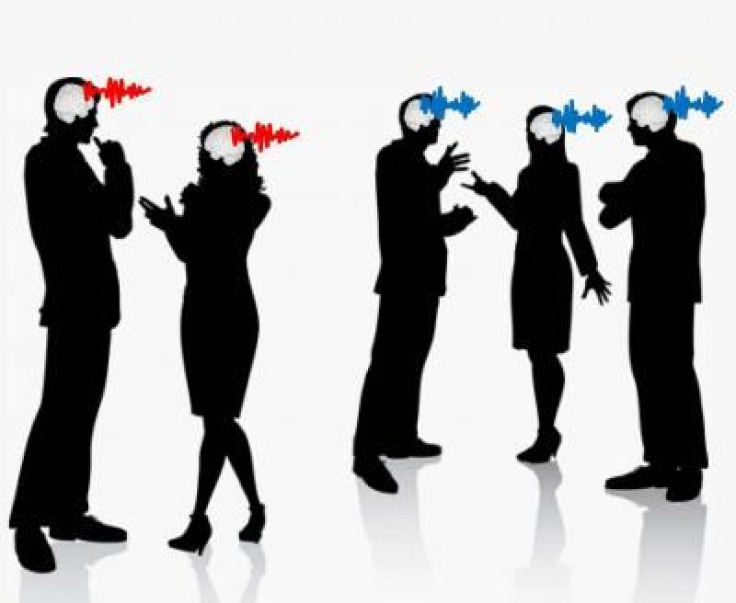Hearing Voices: How Your Brain Solves the “Cocktail Party Problem”

Hearing voices in a crowded room can be irritating when you just want to focus on what one speaker is saying.
New research investigates the "cocktail party problem" to demonstrate for the first time how your brain can hone in to hear a single voice when many people are speaking at once.
When you're at a cocktail party, "there is no way to 'close your ear,' so all the sounds in the environment are represented in the brain, at least at the sensory level," explained senior author Dr. Charles Schroeder, of Columbia University's Department of Psychiatry.
Scientists have long wondered how the brain makes sense of a particular voice heard amid a loud, chattering environment.
"It's something we do all the time, not only in cocktail parties," said coauthor Dr. Elana Zion Golumbic of Columbia University to NPR.
"You're on the street, you're in a restaurant, you're in your office. There are a lot of background sounds all the time, and you constantly need to filter them out and focus on the one thing that's important to you."
Now, researchers have shed light on the mystery by directly observing the brain activity of listeners while they were hearing multiple voices. The study was published on March 6 in the journal Neuron.
The team, led by Schroeder and Golumbic, recorded the brain activity of surgical epilepsy patients while they watched simultaneous videos of people telling stories and tried to focus on only one voice at a time - a setup that mimicked the conflicting voices one might hear at a cocktail party.
"Most studies use very simplified, unnatural stimuli to study the Cocktail Party Problem -- like brief beeps, or even brief phrases -- whereas we were able show that with appropriate techniques, we could study this problem using natural speech," said Schroeder.
"This will stimulate future research to continue the study of this and related issues under rich, natural conditions."
Since surgical epilepsy patients need to have their brains exposed before surgery, the pre-surgery waiting period allows researchers to observe volunteers' brain activity with electrocorticography (ECoG), a grid of electrodes on the brain surface.
In the study, researchers found that the brain waves that form while people are hearing voices are shaped in such a way that the brain can focus on the sound patterns of one speaker while ignoring the competing voices of other speakers.
The auditory cortex, the part of the brain that gets direct audio input from the ears, showed activation that reflected all the voices heard on the recording - though brain waves were much larger for the particular voices that listeners focused on.
Remarkably, higher-order parts of the brain like those related to language and attention were only activated by hearing the selected speaker's voice.
This suggests that the auditory cortex receives input from hearing all the voices in the environment, but only passes along amplifies brain waves from the selected speaker's voice to other brain areas while filtering out the other voices.
Another surprising finding was that the higher brain areas refine their reception of the selected voice's signals as sentences unfold, which shows that the more a listener focuses on one voice among many, the less they process and pay attention to hearing voices of others speaking.
That explains how someone at a crowded cocktail party can be concentrating so deeply on a conversation that they don't notice someone loudly calling their name from across the room.
This is "the first clear evidence that there may be brain locations in which there is exclusive representation of an attended speech segment, with ignored conversations apparently filtered out," said Schroeder.
The "cocktail party problem" research could ultimately help people with conditions like attention deficit hyperactivity disorder, autism, and aging, which often involve difficulties with directing and maintaining attention while hearing voices in the surrounding environment.
Understanding the brain's processing of the cocktail party problem could also lead to much better computer processing of human speech, and help cutting-edge research on brain maps, like President Obama's brain study.



























